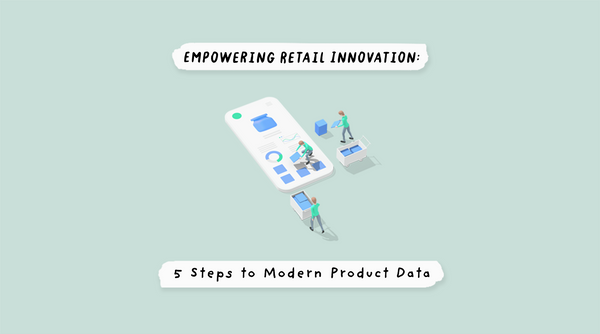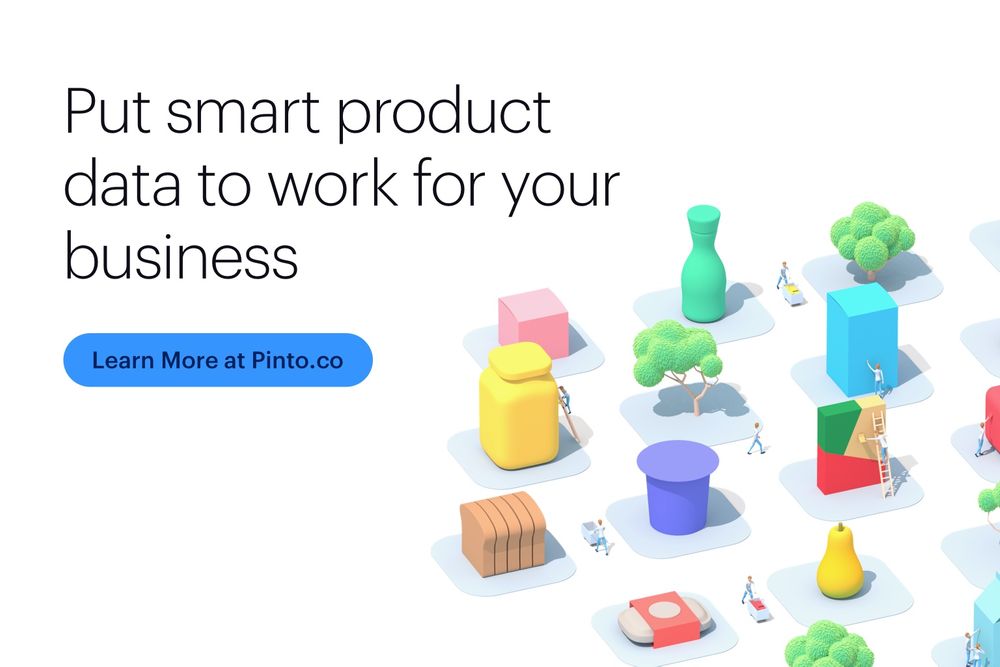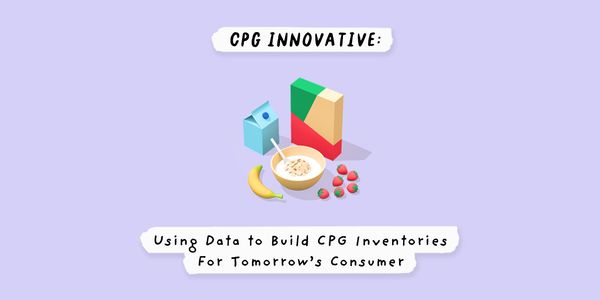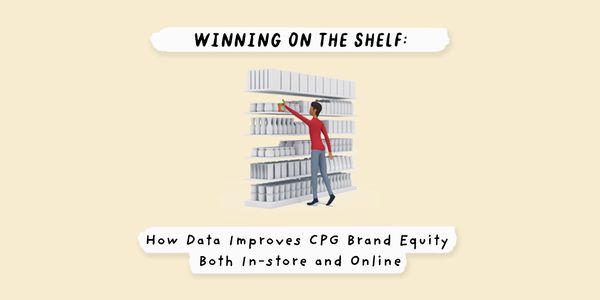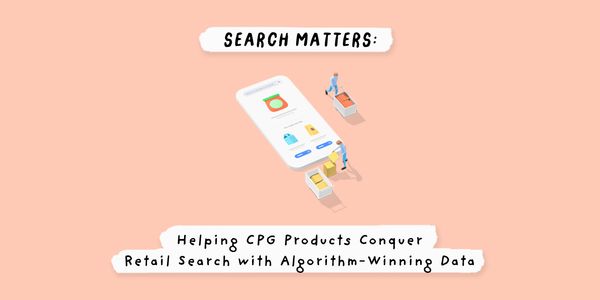- Modern consumers are increasingly looking for products that align with their health goals, adhere to dietary needs, and meet their personal preferences.
- Consumer shopping methods are changing. In 2020, online grocery purchases jumped from only 3.4% of the grocery market to 10.2%.
- Modern product datasets provide consistent, complete, up-to-date, and personalized information that consumers are looking for when they shop.
- A modern product dataset is essential to retailers who want to adapt to changing consumer needs and provide next-generation initiatives such as personalization and smarter merchandising.
Perhaps no industry has been thrown headfirst into a digital transformation in 2020 in the way grocery has. In the last 12 months, online purchases jumped from 3.4% up to 10.2%, with $106 billion of the $1.04 trillion grocery market now spent online. At the same time that this unprecedented growth is taking place, the industry is seeing a continuing trend toward shopping for health and nutrition. This trend demands that retailers offer greater depth and detail of information for food products—all while moving whole catalogs online. These two shifting tides expose a fundamental shortcoming in inventory cataloging—incomplete and out-of-date product information.
However, as with all crises, there is an opportunity nested within this problem. By rebuilding an inventory dataset from the ground up that allows shoppers to search for items by nuanced nutritional and health attributes, retailers unlock opportunities for improved customer understanding and increased revenue.
A robust and healthy product inventory produces programs that are only possible with complete, deep, and up-to-date data. If a retailer can’t communicate how a product fits into a specific diet like Keto, or what kind of allergen labels are present on a package, they will be missing key corners of their consumer market. To evolve, retailers need modern product data. So, what does that mean?
What is Modern Product Data?
Modern product data refers to datasets that are consistent, complete, up-to-date, and tagged across every consumer preference. This is the backbone to creating strategic, data-centered plans that can easily evolve alongside changing consumer needs, as well as developing forward-facing, detailed datasets that can adapt to any future changes.
Healthy data allows retailers to improve catalogs, create cohesiveness across products, and maintain a consumer-focused perspective that drives the future of retail operations and next-generation initiatives centered around personalization, health and wellness, and smart merchandising.
5 Steps to Achieving Modern Product Data
The key to modern product data involves creating a system that supports the ways consumers search for products. The system should have the processes in place to ensure that every item in-store has complete product attributions to keep abreast of current and emerging consumer preferences.
Achieving modern product data can happen in five steps:
Consumer-First Mindset
The way consumers shop is always evolving, and individual preferences change over time. To ensure a true consumer-first experience, retailers need a dataset with enough granularity to relay relevant information to the consumer today while still being adaptable to what they will be searching for in the future.
For instance, a customer who has celiac disease and can't have anything with gluten will want to use a search filter that keeps their diet concerns in mind. A consumer-first searching system would offer specific products that match their keywords and suggest complementary products, such as quinoa or tamari sauce. A few months later, this customer may decide they want to follow a Mediterranean diet. With a personalized search system, they can select the “gluten free” filter as well as “Mediterranean diet” the next time they shop. When they enter the cereal category, they'll get options like oat-based cereals, which adhere to their current celiac concerns, and their new dietary interest.
Complete data with full product attributes puts the consumer first as it allows for successful consumer experiences, every time, now or down the road.
Consistency is King
Consistency allows retailers to have cohesive, high-quality data and attributes across each product and apply a standard way of classifying or “understanding” their inventory. Businesses should not be in a situation where some products are “healthy” with all relevant data points while others are “unhealthy” and only have a few.
For example, let’s think of a retailer who has an inventory data breakdown like this:
20% of inventory has good data
20% of inventory has okay data
40% of inventory has out-of-date data
20% of inventory has no data at all or big data gaps
This inconsistent data provides a faulty foundation for presenting products to consumers as the full set of products cannot be classified in e-commerce or product catalogs. Certain things are unsearchable, essentially invisible to consumers. For example, seaweed, pork rinds, nuts, and seeds are considered “keto friendly”. But they may not be identified in the inventory if they don’t have “keto” in their name or product description and are not manually tagged with the attribute. So, if a consumer uses the “keto” filter, only a handful of products will be visible instead of the thousands that are relevant. With this kind of unhealthy data, consumers are shown limited options and cannot discover new products, leading to an inconsistent and poor customer experience. Likewise, invisible products are unprofitable products, and it benefits retailers to make sure every product in a catalog can be efficiently searched for and bought.
Consistent data reduces incidences of invisible products and increases the ways consumers can search. It also helps retailers better understand their inventories and opens opportunities for new merchandising methods.
Timely Updates
Modern, smart product databases help consumers find products against all of their different considerations and nuanced personal preferences. This means that product information needs to be continuously updated to ensure it fits changing dietary concerns, health preferences, and search behaviors.
Product catalogs that are not up-to-date can be harmful, as they risk recommending the wrong products, which can result in health problems, allergic reactions, and loss of consumer trust. For example, a reformulated product might have more sodium than before and be unsuitable for a heart-healthy diet. Likewise, new ingredients can introduce allergens that can be harmful to unknowing consumers.
Retailers often have product data that is more than a year old. But a lot can happen in a year: updates to nutrition facts, ingredients, or new certificates for a product such as vegan, non-GMO, gluten-free, etc. Regular data updates are necessary to stay current and avoid consumer health risks.
Data Health First
Data health consists of complete nutrition information, ingredients, preferences, on-pack information, and is maintained by regular, timely updates. Healthy data enhances a retailer’s ability to provide consumer-focused initiatives that promote long-term consumer relationships.
With healthy data, retailers can fill in missing information gaps and identify what needs to be refreshed or completely recaptured in a catalog. This ultimately provides the consistent data that enables more effective personalization methods, such as specialized merchandising (e.g., curating keto snacks for keto consumers both in the aisle and online), or smart searching. A well-developed dataset is also fundamental to a company’s goal of being more data oriented over time.
Empowering Suppliers
Getting the right products in front of the right customers is a shared goal of suppliers and retailers. Suppliers know their products best and, at the end of the day, their success and a retailer's success depend on optimizing for consumer buying behaviors.
To ensure these relationships are optimized, retailers need to give their suppliers guidance on which specific data assets they need to provide in order to help get their products in front of the right customers. This way, retailers will be able to get them set up in the ecosystem correctly while ensuring data is always up-to-date and optimized.
Giving suppliers the rationale and a clear roadmap as to what they need to do and why they need to do it will strengthen these symbiotic relationships and open up new avenues for data-sharing and behavior predictions. Ultimately, an empowered supplier is a loyal supplier, and both partners will benefit from creating strong data health.
Help Your Data Work For You
Many retailers are currently operating with incomplete datasets that lack data-depth, are out-of-date, or riddled with inaccuracies. This presents a considerable barrier when trying to adapt data to new consumer needs, or introducing new technologies such as loyalty programs and innovative e-commerce.
Modern product data empowers supplier sales, and offers insightful and value-driven consumer information. It also future-proofs businesses against any new changes in consumer preferences, health needs, and new technologies. With healthy data at their side, retailers can stay relevant, increase customer retention, and continue to innovate their systems with confidence.
Go learn more about Pinto at: https://pinto.co/use-cases/product-information or get in touch.

